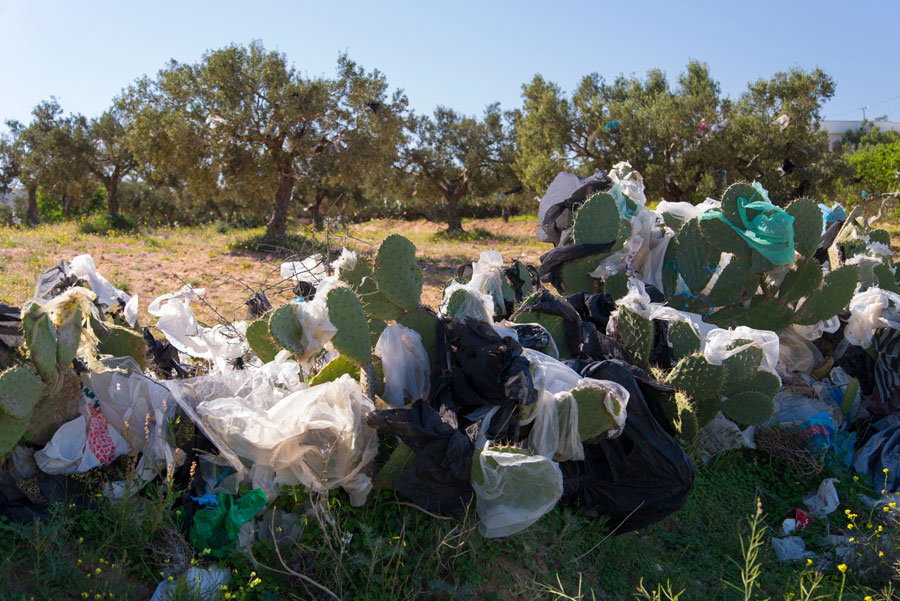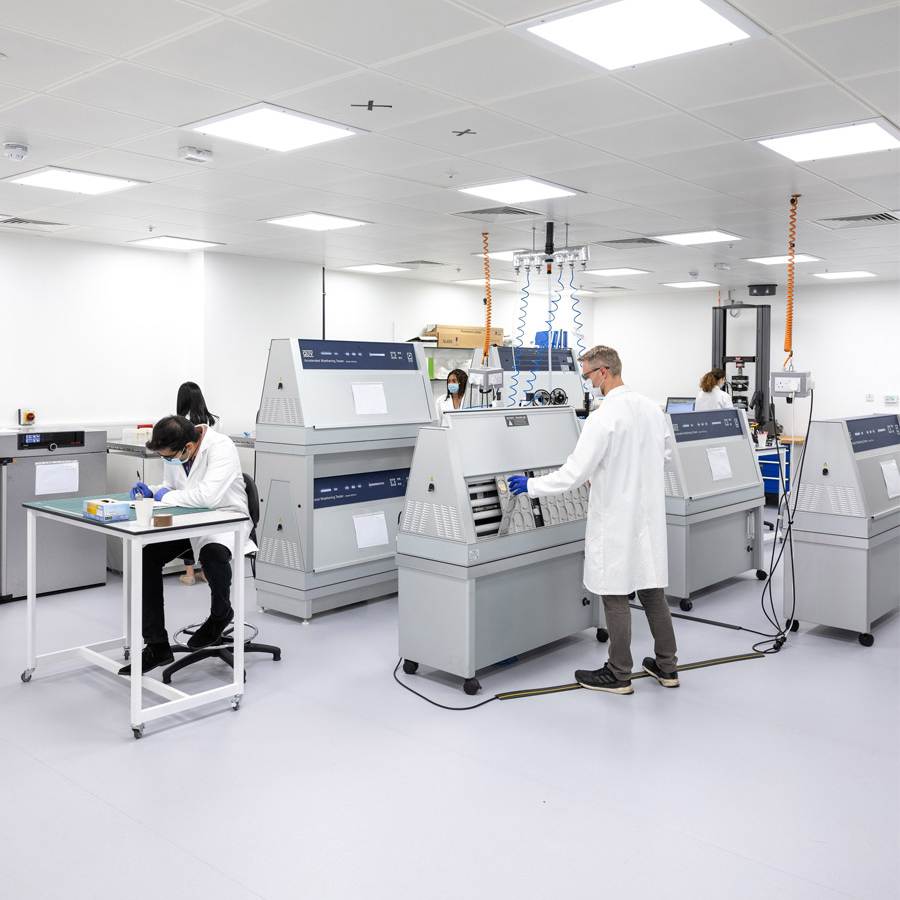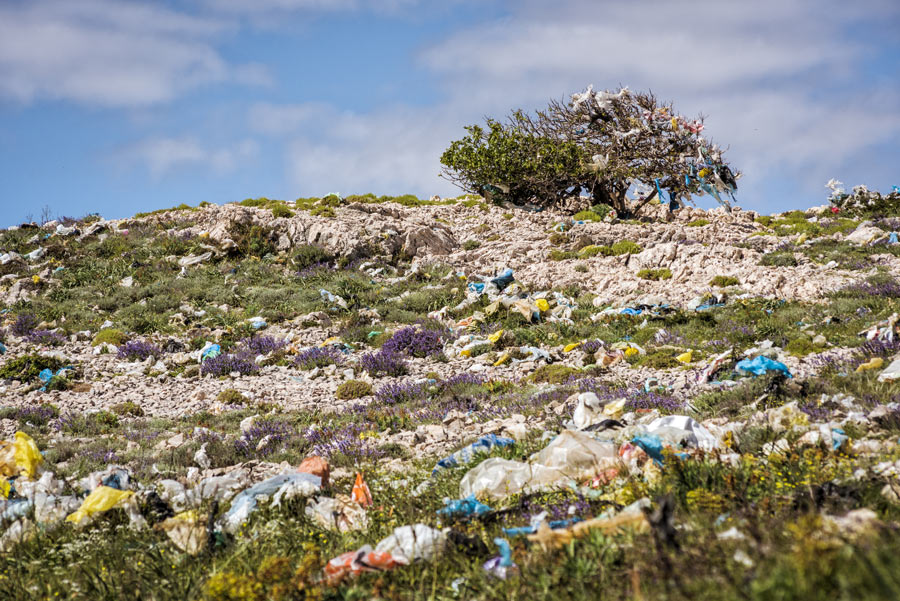Spectroscopic standard could help revolutionise the analysis of plastics
Plastic pollution is an environmental catastrophe in progress. 32 percent of the plastic we use escapes into the environment and only nine percent currently gets recycled. Fugitive plastic products often undergo various forms of environmental degradation, which lead to the formation of microplastics. British company Polymateria have developed additives for conventional plastics which facilitate biodegradation if they escape the waste stream. This fresh approach is also a rigorous one. The team at Polymateria noted that conventional methods to determine carbonyl index, a measure of plastic durability or decay, lacked coherence: there was no agreement in the industry about what type of analysis works best. Their proposal – to standardise the use of Specified Area Under Band (SAUB) analysis to determine carbonyl index – has now been taken up by the American Society for Testing and Materials, as well as the British Standards Institute, as the preferred way to assess plastic transformation.
381 million tonnes of plastic were created in 2015: that’s roughly two-thirds the mass of the human population (Our World in Data). Synthetic plastics are less than a century old but, since the mass expansion of plastic production in the ‘50s, 5800 million tonnes of the plastic produced has been disposed of, only nine percent of which has been recycled and a staggering 32 percent estimated to have escaped into the natural environment.
Plastic packaging is the primary driving factor for plastic generation, accounting for almost 50 percent of the plastic made worldwide. In this context, it is hard to ignore the reason plastic is so popular: it’s cheap, versatile, mouldable, light, and – crucially – it doesn’t break down easily. Plastic can sometimes be used too conveniently and for the same reason can often be disposed of without consideration.
The microplastic mega-problem
But what do we know about plastic in the environment, and why is it such an alarming prospect?

Global annual production of plastic waste continues at a monumental scale and increases every year. Meanwhile, global waste management streams fail to keep pace with the growing global population and increased consumerism. Each year, megatons of synthetic plastics leak into the environment, around 10 megatons of which enters the oceans. The rest, a staggering 40 megatons, remains on land and is considered ‘terrestrial fugitive plastic’.
As these plastic products break down they form microscopic fragments known as microplastics. The key environmental risk is that they are biologically inert. Therefore, over time, they bioaccumulate in the natural environment.
We know that we need to limit the amount of plastic and microplastic pollution, however it is not as simple as turning off the ‘plastic tap’. In order to enable the removal of standard plastic products from production, sustainable, suitable replacements must be secured as plastics have a plethora of vital uses. These include: single-use sterile medical equipment, to reduce the risk of cross-contamination in hospitals; hygienic food transport and storage solutions, to reduce food waste; lightweight transport and efficient insulation, to reduce fossil-fuel based energy consumption. Given the current scale of plastic use it is inevitable that some will escape into the environment. So, what can be done to tackle the problem?
Problematically, many studies have stated carbonyl index values with wildly different values, making comparisons meaningless.
Polymateria’s solution
British company Polymateria are working “to develop technologies for plastics that impart biodegradability should they become plastic pollution on land in our environment”.
Polymateria have designed an ’innovation inside’ and manufacture technologies for various types of common plastic products that are designed to impart time-delayed biodegradability. Their technology can be used alongside common plastics, like polyethylene or polypropylene. Their aim is to ensure that their plastic products become biodegradable wax rather than fragmenting into microplastics, should they slip through the net of waste management systems and end up in the environment, thereby avoiding further contribution to the problem of plastic pollution.
To create this new technology, the team of scientists at Polymateria have had to revolutionise scientific thinking on the breakdown process of different plastics under different environmental conditions. This has meant going beyond standardised testing practices and has led to the development of enhanced new methodologies for plastic analysis.
Setting new standards
Plastic degradation is caused by numerous factors, including extrusion manufacturing of products and aging due to use, especially in the case of outdoor applications. The ability to predict the lifespan of a plastic product, whilst it is in use, is of critical importance to both plastic manufacturers and consumers. Furthermore, the potential to prove the durability of a material under natural environmental stresses (sunlight, wind, rain, etc.) is essential to aid and advance the understanding and development of new environmentally inert materials that do not add to plastic pollution, bioaccumulation and consequent environmental damage.
Infrared methods are commonly used to test plastics, like polypropylene and polyethylene, and provide a value referred to as the carbonyl index (CI), one of the many metrics used to interpret the breakdown of a material. To date, however, there has been no consensus regarding which of the multiple possible techniques should be used to calculate CI as the definitive technique. By comparing and contrasting each technique using the same material, the team at Polymateria found that the different methods of calculation each provided wildly different CI values; with so much inconsistency between different techniques, the metric becomes as good as useless.

Comparing the carbonyl indices
In a paper published earlier this year, scientists at Polymateria compared the precision and accuracy of several of these methods for determining carbonyl index. The most traditional IR spectroscopy methods rely on transmission of light through a material, but this method is mostly outdated: it is only really applicable for thin films of plastic as larger chunks need to be pressed into shape to enable testing which can be difficult for plastics made brittle by weathering.
Measuring the carbonyl index of a plastic requires comparing the peak in the carbonyl group spectrum to another reference peak. When analysing thicker or more opaque materials using transmission spectroscopy the reference peak becomes saturated, giving an inaccurate value for the carbonyl index. This can happen with materials even as thin as 0.1 mm.
ATR-FTIR (Attenuated Total Reflection – Fourier Transform Infra-Red) spectroscopy has largely superseded transmission IR spectroscopy. In ATR-FTIR, a crystal in contact with the surface of the material passes light through the surface of the sample and is reflected back out to a detector. Almost no sample preparation is needed, and samples can be analysed quickly at low cost.
There are multiple ATR-FTIR methods with different light angles and crystal types, which can affect the depth that the light penetrates the material. Problematically, many studies have stated CI values without specifying the type of spectroscopy used, and some even describe using transmission IR spectroscopy despite testing materials up to half a millimetre thick – five times the desirable thickness, leading to CI values being obtained of questionable validity.
Looking under the curve
Having reviewed the common spectroscopic methods, and performed their own tests, the Polymateria team proposed that the methodology for generating CI values should be standardised.
Their tests found that the most reliable method for determining consistent carbonyl indices is the Specified Area Under Band (SAUB) method, a new way of interpreting the same spectroscopic data from ATR-FTIR spectroscopy. Rather than taking the height of the carbonyl peak and comparing it to the height of the reference peak, the SAUB method takes the area under the carbonyl peak and compares it to the area under a universal reference peak for both polyethylene and polypropylene plastics.
This has some distinct advantages over conventional techniques: most notably it specifies the signals that are being analysed and defines the area to measure in each case, thus removing the need for an operator to make an arbitrary decision as to which is the correct reference peak to analyse.
In Polymateria’s approach, the area of the peaks gives more accurate information on the total concentration of CI species.
It also makes more intuitive sense than using peak heights. In infrared spectroscopy the height (or intensity) of a peak is related to the concentration of a chemical species. But in infrared spectroscopy very similar but chemically different species sit alongside, and even overlap, each other, in the same area of the spectra. This means that the height of the peak is not as informative as the combination of both height and breadth, i.e. the area under the peak. The height may indicate that one chemical species is at higher concentrations than the others, but the area of the peak gives the total concentration of all the chemically similar species in the test sample, a far more useful indicator. Peak areas are therefore more reliably representative of what is ideally being measured in the spectroscopic process – the concentration of all carbonyl species as an indicator of the extent of chemical change the plastic has undergone.
Through their work, it became clear to Polymateria’s team that the change in the area of the signals in the infrared measurements was far more accurate in observing the chemical change of a plastic sample over time. They have shown that the SAUB method outperforms other stated methods of determining CI and can even be used to compare one test sample of plastic to another. They have also demonstrated that the method works for both polyethylene and polypropylene, allowing for comparisons to be made between these two different types of plastics.

The team also stress-tested their preferred method by analysing a plastic undergoing accelerated weathering. Results for the SAUB showed better flexibility than other methods, increased reliability, and better precision for identifying change over the course of the weathering, including when the plastic was highly embrittled and difficult to physically handle.
Plastic analysis we can trust
The team at Polymateria were keen to ensure that their discovery did not remain the intellectual preserve of academics. Despite successfully fulfilling the rigorous criteria of academic peer-review in publishing their work, they are now going a stage further in converting the SAUB methodology into a Standardised Test Method. Through a working group at the American Society of Testing and Materials (ASTM), the SAUB methodology is undergoing further technical scrutiny and review on its way to becoming an ASTM International Test Method.
The goal is to give plastic companies, as well as environmentalists, a trusted tool that can be used to assess the level of chemical change a plastic has undergone either in its designed use or in its misuse, as a fugitive plastic on land or in a marine environment.
Additionally, though only published this year, the SAUB IR spectroscopy forms a key part of a new British Standards Institute (BSI) standard specification, designed to determine the biodegradability of plastics in the open-air terrestrial environment. In this case, the SAUB CI method provides one of the key indications in assessing the biodegradability performance of a plastic, to verify claims made by plastic companies that their products are biodegradable. In this BSI standard, the key goal for achieving biodegradation is the chemical transformation of the plastic material into a bioavailable wax. The SAUB CI measures the extent of this transformation and allows for a number to be assigned to the wax determining its CI. This, in combination with other analyses, determines if a bioavailable wax has successfully been produced. The key shift here is to move away from unsubstantiated claims and to produce numerical data on the performance of a plastic material in line with other International Standards.
Trusting plastic to ‘stay’ or ‘go’
Plastic pollution is one of the key environmental issues of our time. Given that plastic is so valued and valuable to the global economy and our way of life, its production will inevitably continue. In the meantime, we need to improve waste management systems so more plastic is successfully recycled and more gets collected responsibly, so that as little plastic as possible ends up on land and in the ocean.
What scientists, like those at Polymateria, are doing to help reduce this problem is innovating to create new technologies for plastics, as well as new plastic materials. These materials need to be either more durable (i.e., resistant to environmental decay if littered) or more environmentally responsive than those before (i.e., use the environment to help change themselves into biodegradable materials, if they become littered).
In both cases, new analytical tools will be necessary to prove the performance of these novel innovations. Methodologies that are accepted by the rigorously precise world of academia, and yet are also used actively by industry, can provide a clear pathway for bringing greater confidence to the general public that a plastic material will either be durable or decay. The SAUB CI method and the way it has been created, is a good example of this collaborative approach of bringing credible innovation to evaluate the types of plastic products we all use in our everyday lives.
Personal Response
Why do you think your team were the first to highlight the inconsistencies in calculating carbonyl index?
<> The team at Polymateria were the first to highlight this and make a huge effort to create a more definitive method, because we were interested not just in the CI value, but the change in the CI value over time. When a value changes over time it is especially important to be able to measure it as accurately as possible. We noticed that by combining the changes that may occur either to the height or the breadth of the peaks, we were obtaining far more accurate information, as the plastic sample chemically changed over time. This is critical to evaluating plastics in the natural environment as the length of exposure they have is linked to the amount in which they can be chemically altered.